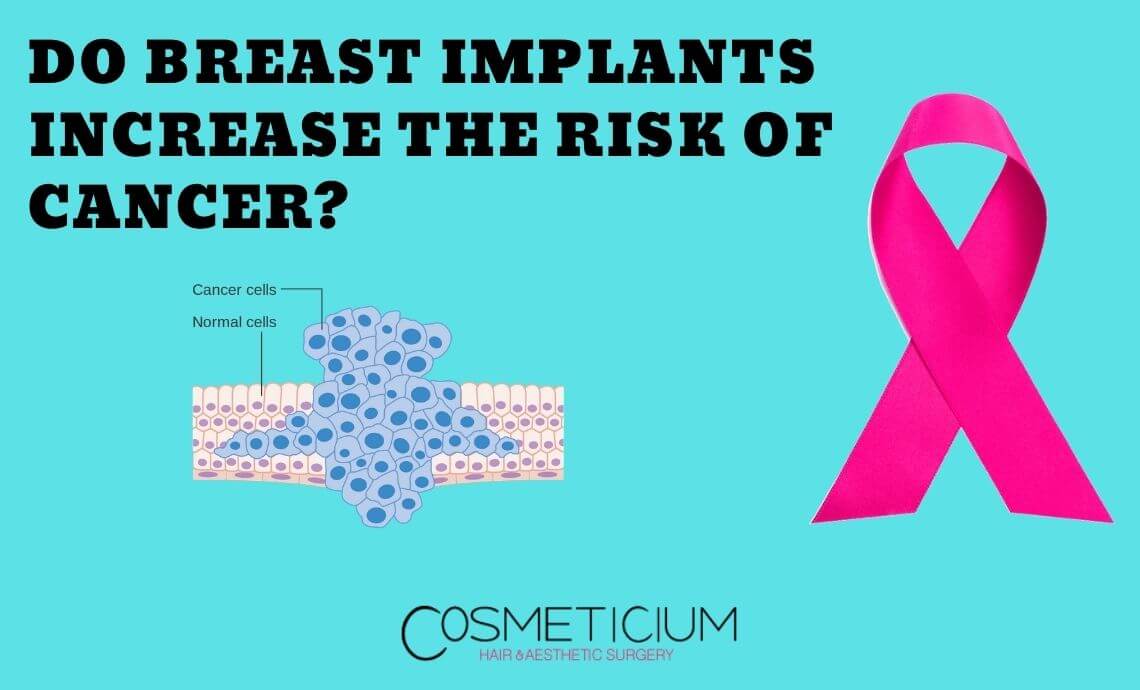Implants used in breast augmentation meet the expectations of women to a great extent. For this reason, it has become the most preferred method in breast augmentation. However, some questions regarding this method confuse people’s minds. One of the main questions is the relationship between breast implants and cancer. Can breast implants cause cancer? Or is this just an urban legend? All the details are in our article.
Table of Contents
The Relationship Between Breast Implants and Cancer
Many studies have been done to determine whether breast implants cause breast cancer. Before addressing this research, let’s look at how the body responds to implants. After silicones are placed on the breasts, a capsule can be formed around them by the body.
Capsule formation is a condition that is considered normal. On the other hand, the shrinkage of the capsule is considered to be undesirable. Anaplastic Large Cell Lymphoma (ALCL) is a type of cancer that occurs accordingly. The realization risk of this is 1 / 30,000. ALCL, which is extremely unlikely to be seen, reveals itself with the excess fluid around the silicone.

Although ALCL is a type of cancer, it is extremely easy to treat and the risk of death is very low. The death rate in this type of cancer is 0.4 per million. In other words, only 4 out of ten million people who are sick die. The risk of death from many events in daily life is much higher than ALCL.
For example; the risk of death from driving for 1 hour per day is 2 per million. In other words, the risk of death in driving is 5 times higher than ALCL, a cancer type. These figures show that the cancer type in question is not very dangerous. So why is it the case?
Why is the Risk of Death in ALCL Low?
As is known, cancers appear as tumors and begin to affect their surroundings. They can be seen in different parts of the body, especially when they spread to the blood and lymph system. Thus, they prevent the body systems from working properly and eventually cause death.
In the cancer type known as ALCL, tumors occur inside the capsule formed around the silicone. Thus, there is no such thing as spreading to other parts of the body. For the treatment, it is sufficient to remove the silicone with the surrounding capsule. Generally, chemotherapy and radiotherapy are not needed.

You May Also Like: Different Types of Breast Implants | Which One is Better for You?
Do Breast Implants Increase the Risk of Cancer?
Now let’s move on to the answer to the question we asked at the beginning of the article. First of all, it should be underlined that breast implants can only cause a type of cancer known as ALCL. This rare type of cancer is generally non-fatal and very easy to treat. Causing other types of cancer, especially breast cancer, are out of the question. There are many studies on this subject and similar results have been obtained in all of them. Breast implants do not cause breast cancer. Even if there are possible complications of breast implants, it can be said that breast silicones do not increase the risk of cancer.
If we specifically consider ALCL, some factors cause this type of cancer to occur. The regions where people live and the types of silicone used are the main ones. Macro-textured surface silicones are more likely to cause cancer. Specialists and clinics experts in the field do not use such silicones.
You May Also Like: 10 Celebrities with Breast Implants
How to Reduce the Risk of ALCL?
Research shows that the shrinkage of the capsule around the silicone is caused by the bacterium called S. epidermidis. The cause of cancer in the capsule is the bacterium Ralstonia. Fighting these two bacteria is the basis for reducing the risks. Other than that, prominent measures can be listed as follows:

- Use of appropriate antibiotics
- Washing the area where the silicone will be placed with antibiotics, disinfecting the tools used
- Closing the incision with layered repair
- Keeping the contact of the implant with air as little as possible
- Not using drains after surgery
- No incision in the armpit and on the nipple
- Covering the nipple with dressing during the operation
- Bleeding control
- Creating pockets with atraumatic methods and avoiding mammary glands
Looking at these precautions, it can be said that a high level of sterility is crucial. Apart from these measures, it is possible to take similar measures. Thanks to all these measures, the risks are significantly reduced.
For Your Other Questions about Breast Implants, You Can Contact Us From Our Consultation Page.

